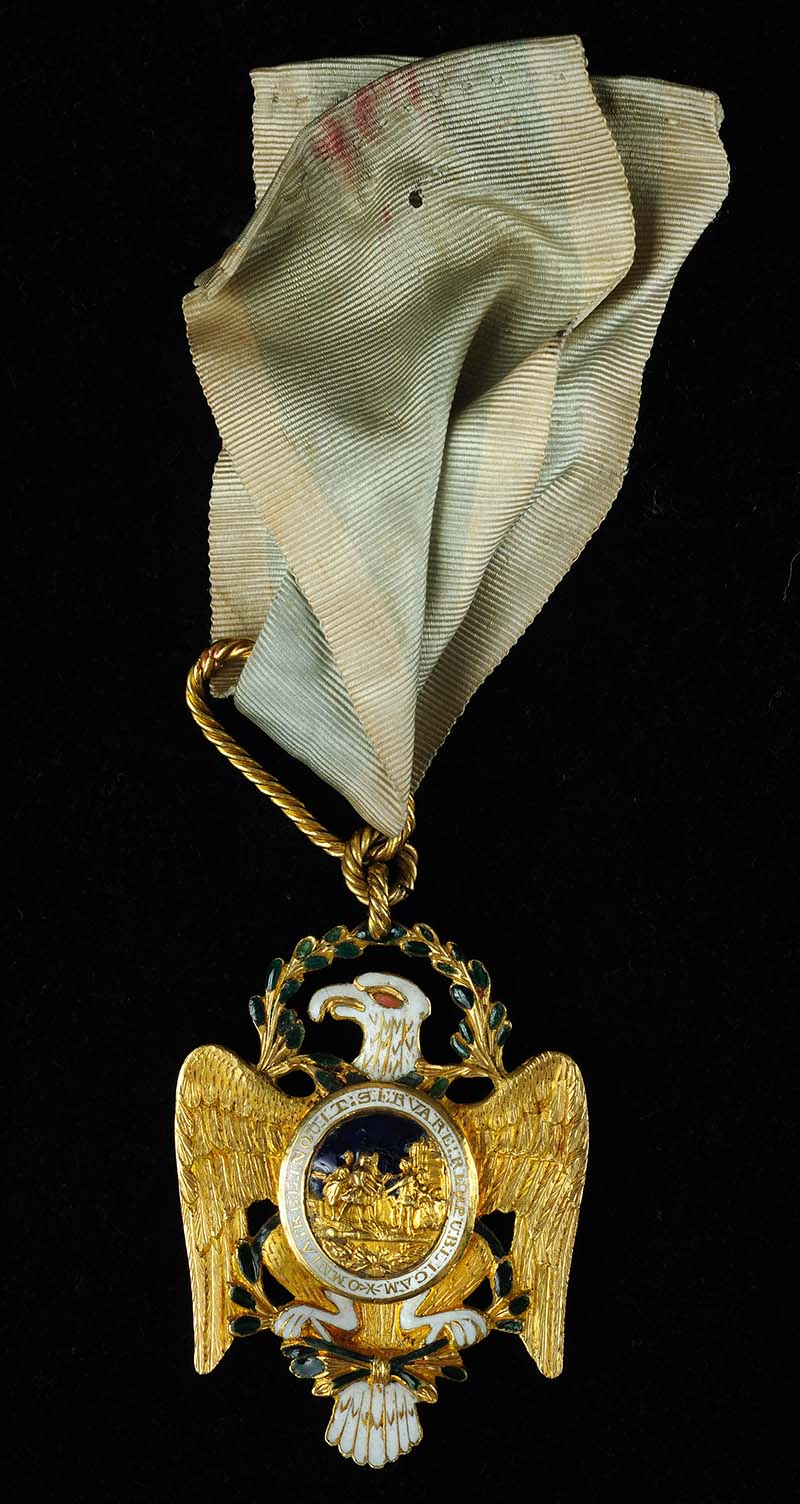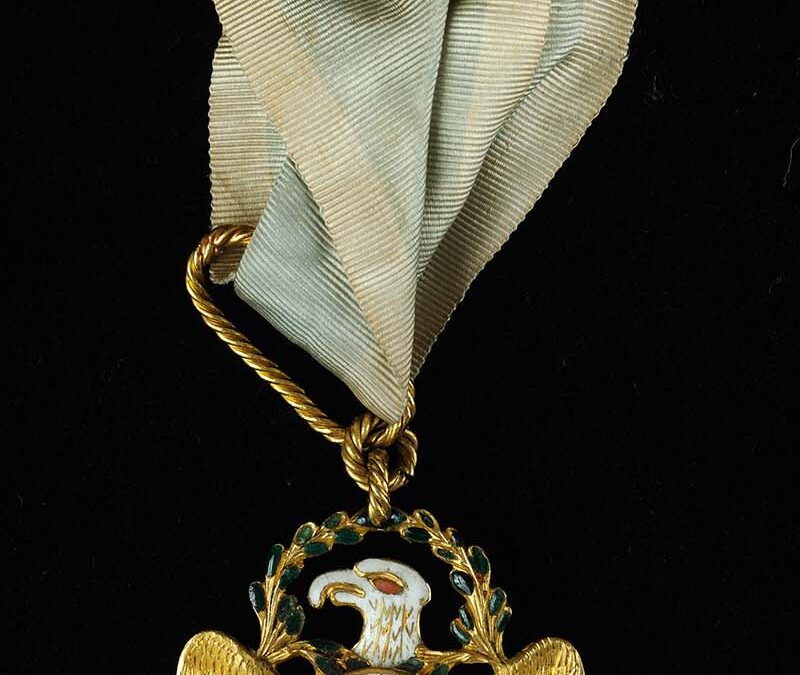Society of the Cincinnati Eagle insignia

| Maker | Jeremiah Andrews |
| Date of Creation | 1784–91 |
| Location | Philadelphia, Pennsylvania |
| Materials | Gold, enamel, and silk |
| Institution | The Society of the Cincinnati |
| Credit Line | Museum purchase, 2018 |
| Accession Number | M.2018.011.1 |
| Photo Credit | Gregory R. Staley |
The insignia of the Society of the Cincinnati was designed in 1783 by Pierre-Charles L’Enfant. The Society was founded that year by 2,200 veteran officers of the American and French forces that had secured American independence, with a mission to ensure that the principles of the American Revolution would not be forgotten. The hereditary organization’s insignia, known as the Eagle, is a double-sided medal in the shape of the bald eagle, suspended from a light blue-and-white ribbon symbolizing the French-American alliance that was crucial to winning the Revolutionary War. With its down-turned wings, olive branches in both talons, and depictions of the ancient Roman hero Lucius Quinctius Cincinnatus, the Society Eagle emphasizes the founding of a peaceful American republic and the return of its soldiers to their civilian lives. Members wore their Eagles to parades, orations, and other civic events, in addition to private Society meetings and gatherings. The Society insignia became, in part, a public symbol of the officers’ participation in the War for Independence and a reminder of the American republic’s ideals and origins. This example was owned by Capt. Allan McLane (1746–1829), a Delaware officer who served for the entire war, distinguishing himself in command of light troops harassing British foraging parties and gathering intelligence for George Washington’s army. McLane bought this Eagle from Jeremiah Andrews, an English-born silversmith who was the first craftsman in the United States to make the Society’s insignia. Andrews made gold Society insignias from 1784 to 1791 in his Philadelphia shop, which he had established in 1776. There are no known records documenting how many Eagles Jeremiah Andrews made and sold, but McLane’s Eagle is one of fewer than twenty examples known today.

